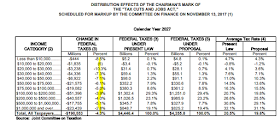2017 was the fourth year in which xpostfactoid focused mostly on healthcare access -- and more specifically, on ACA implementation (and, this year, on de-implementation, threatened and actual).
It was a year of intense combat (to be continued...) and high drama, and I participated not only via writing, but as an advocate in New Jersey working to help ward off ACA repeal, and as a Certified Application Counselor during Open Enrollment.
Below is a look back at a few posts, roughly one per month, that I hope might have contributed something to our understanding of where we've been and where we're headed in the struggle toward (or away from) universal healthcare access. These include:
It was a year of intense combat (to be continued...) and high drama, and I participated not only via writing, but as an advocate in New Jersey working to help ward off ACA repeal, and as a Certified Application Counselor during Open Enrollment.
Below is a look back at a few posts, roughly one per month, that I hope might have contributed something to our understanding of where we've been and where we're headed in the struggle toward (or away from) universal healthcare access. These include:
- Statistical measures of the extent to which Republican repeal-and-replace bills (AHCA, BCRA) would reduce subsidies to low income Americans (and relatedly, at the contrasting structure and aims of Democratic and Republican healthcare spending cuts).
- Previewing the paradoxical effects of Trump's cutoff of federal reimbursements for Cost Sharing Reduction subsidies, then spotlighting the actual effects in counties where marketplace enrollment is heaviest.
- A couple of passes (1, 2) at my vision of how U.S. healthcare might most plausibly and profitably evolve.




